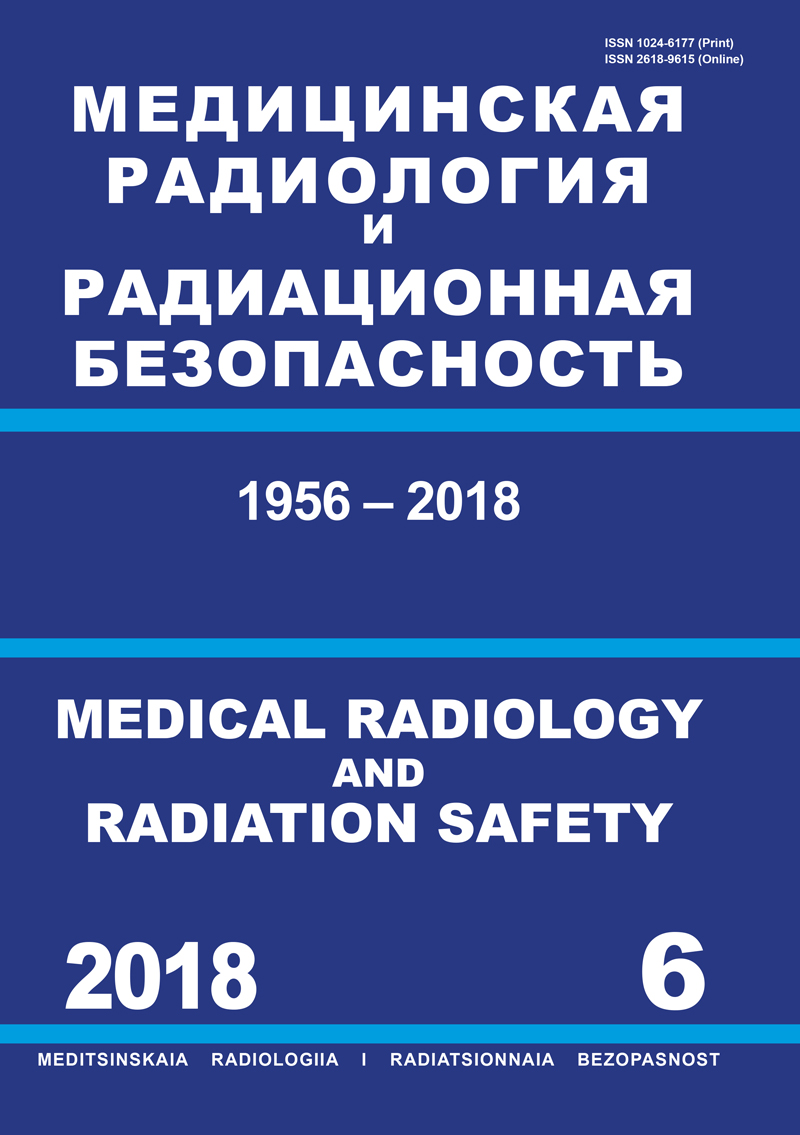Russian Federation
Russian Federation
Russian Federation
Russian Federation
Russian Federation
Russian Federation
Russian Federation
Russian Federation
Russian Federation
Russian Federation
CSCSTI 76.03
CSCSTI 76.33
Russian Classification of Professions by Education 14.04.02
Russian Classification of Professions by Education 31.06.2001
Russian Classification of Professions by Education 31.08.08
Russian Classification of Professions by Education 32.08.12
Russian Library and Bibliographic Classification 51
Russian Library and Bibliographic Classification 534
Russian Trade and Bibliographic Classification 5708
Russian Trade and Bibliographic Classification 5712
Russian Trade and Bibliographic Classification 5734
Russian Trade and Bibliographic Classification 6212
Purpose: To assess the excess relative risk in terms of 1 Sv on the basis of materials on the incidence of malignant neoplasms of workers in the nuclear industry – liquidators of the Chernobyl accident, as well as part of workers who worked or continue to work with sources of ionizing radiation. Material and methods: The data base of the Industry Register of persons exposed to radiation as a result of the Chernobyl accident (ORF) was used in the work. Methods of cohort analysis of the accumulated disease incidence were used, based on Poisson regression and Cox regression. Estimates of the ERR at 1 Sv were calculated using both the traditional scheme using the AMFIT module and the modified formula proposed by Paretzke. Results: It is shown that in some cases, the risk estimates obtained by the modified formula are more realistic, in other cases both estimates have similar values. Conclusion: Analysis of the incidence of solid neoplasms in the liquidator cohort showed: 1. At the dose range < 200 mSv, point estimates of relative risk indicate that there is no dose-associated risk. 2. In the low-dose range for risk assessment, a modified Poisson regression approach that is free of control specifics should be used. 3. The validity of a dose response is characterized by the risks obtained using a dose of occupational exposure. 4. An important issue is the calculation of the risk of radiation-caused diseases with the use of the total dose received by an individual from all types of radiation.
radiation risk, malignant neoplasms, doses of different types of radiation, total dose, Chernobyl accident, liquidators
1. Heidenreich W, Paretzke H, Jacob P. No evidence for increased tumor rates below 200 mSv in the atomic bomb survivors data. Radiat Environ Biophys. 1997;36(3):205-7.
2. Shafranskiy IL, Ilin LA, Tukov AR, Rozhdestvenskiy LM. Comparative risk analysis of radiation-induced morbidity of malignant neoplasms of nuclear industry workers-liquidators of the Chernobyl accident and survivors of the atomic bombing - according to the study LSS. Med Radiology and Radiation Safety. 2009;54(2):33-7. Russian.
3. Ozasa K, Shimizu Y, Suyama A, Kasagi F, Soda M, Eric J. Studies of Mortality of Atomic Bomb Survivors. Report 14: Solid Cancer and Noncancer Disease Mortality: 1950-1997. Radiat Res. 2009;(177):229-43.
4. Preston D, Shimizu Y, Pierce D, Suyama A, Mabuchi K. Studies of Mortality of Atomic Bomb Survivors. Report 13: Solid Cancer and Noncancer Disease Mortality: 1950-1997. Radiat Res. 2003;(160):381-407.
5. Koks DR, Ouks D. Analysis of life time type data. Moscow, Finance & statistic. 1988.
6. Koryistov YuN. Factors that distort the assessment of carcinogenic risk of low doses of radiation according to epidemiological data. Med Radiology and Radiation Safety. 2014;59(4):41-7. Russian.
7. Petin VG, Pronkevich MD. Analysis of the effect of low doses of ionizing radiation on human cancer. Radiat and risk. 2012;21(1):39-57. Russian.
8. Sakai K. Biological responses to low dose radiation-hormesis and adaptive responses. Yakugaku Zasshi. 2006 Oct;126(10):827-31.
9. Gorskiy AI, Maksyutov MA, Tumanov KA, Schukina NV, Chekin SYu, Ivanov VK. Nonparametric analysis of radiation risks of mortality among liquidators of the Chernobyl accident. Radiation Biology. Radioecology. 2016;56(2):138-48. Russian.
10. Obesnyuk VF. The effect of competing streams of events in the cohort risk assessment of radiation-epidemiological studies. Med Radiology and Radiation Safety. 2010;55(6):14-25. Russian.
11. Brenner D, Doll R, Goodhead D, Hall E, Land C, Little J, et al. Cancer risks attributable to low doses of ionizing radiation: Assessing what we really know. PNAS. 2003;100(24):13761-6.





